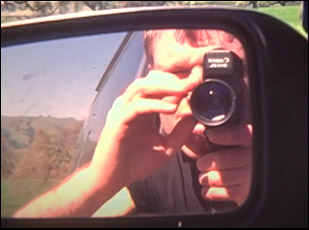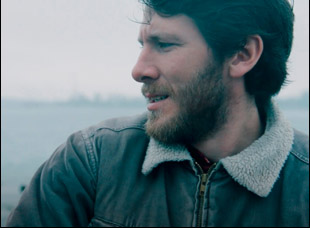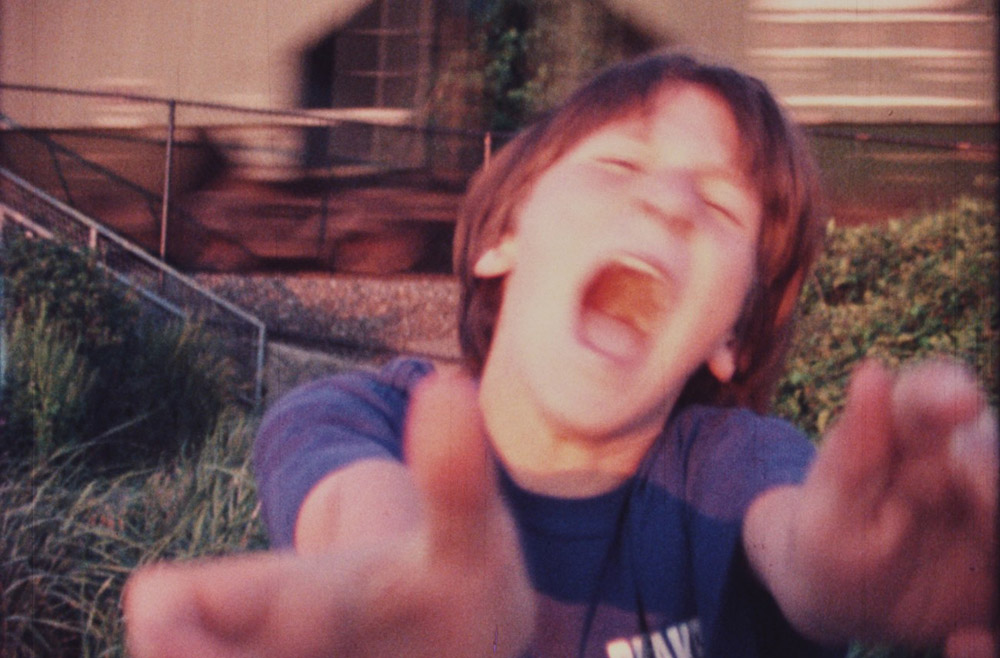Reed Harkness always wanted to be a filmmaker, but there was no way he could envision that “Sam Now” was the film he’d end up making as his first feature, making use of nearly three decades of footage he’d shot with his stepbrother Sam from the age of 11 on. Nine years older, Harkness first felt his way around the camera as most do, shooting home movies, but they quickly they couldn’t be mistake for the work of an amateur when Harkness added cinematic flourishes well beyond his experience and found himself with a juicy subject for a documentary that most would lust after when he could bear witness to the changes he’d see in Sam and his other stepbrother Jared after their mother Jois, who was married to his father Randy, left their home in the Pacific Northwest without notice in 2000.
It isn’t only Sam and Jared who can be seen transforming in “Sam Now,” continuing to be close as brothers but having entirely different reactions to growing up without one of their parents, but also the role of Harkness’ filmmaking when the initially innocent endeavor of playful experiments starts to take shape around a greater sense of purpose when Harkness asks if Sam wants to try to find his mom. While his simple answer is yes, the process of tracking her down and what it will mean for the entire family if they do is far more complicated and over the course of another 15 years, Harkness captures the fallout when looking for Jois exposes the different relationships and attitudes they have towards her and how it changes their interactions with one another as well as in Sam and Jared’s case the people they evolve into. With the latter an honors student who sees his grades suffer after Jois’ disappearance while the former seems more unbothered by it as he puts on an alter ego called the Blue Panther, the reckoning each has with this traumatic event can only be told over time and with the unique longitudinal access that Harkness has, “Sam Now” never rushes those revelations, illuminating how they happen with distance and reflection.
After a year-long trip on the festival circuit where it was a favorite at Hot Docs, DOC NYC and Indie Memphis and Savannah, where it took home the prize for best documentary, “Sam Now” is starting its theatrical release across the country and Harkness graciously took the time to talk about getting some closure on the long-term project, working through all the material he shot over the years and what it was like to gain this perspective on his own family from making a film about them.

Yeah, so many scraps. I carried this for 25 years [with] lots of different iterations of filmmaking styles and techniques. I started off as a experimental fiction filmmaker trying to make coming- of-age movies with my little brother who’s 11 [at the time] and then that evolves into a bigger documentary thing about our missing mom. First, it was just a desire to help my family. There was a need and somehow I saw a way to help with using our filmmaking. Sam and I are making all these movies, so we approach this kind of trauma with a lighthearted filmmaking exercise. We’re going on a road trip together to find Sam’s missing mother, my missing stepmother, and we’re gonna approach it in the same way we do our other movies. But then why do I need to make it again [on a larger scale]? It becomes about a thing bigger than me, and bigger than Sam, and bigger than Jois, and bigger than my whole family. It’s really something that I think everyone needs to see.
As much as you say it helped the family, it looks like the capacity was there to exacerbate the tensions within it as well. Was that tricky to navigate?
Many, many times. This is a 24-year long process where I am all along the way questioning, and that’s why it’s a long process. I’m debating with myself when is appropriate to film, when is not and I’m not filming the whole time. There are years where I’m not filming. There’s periods where I’m filming heavily. There’s periods where I’m giving people space and there’s a lot more to it than that, but I was driven to do this, and I could rationalize it and try to explain it in a million ways, but I think most simply my heart told me to do it.
It was interesting to learn when describing your family as being close-knit, living not so far from one another, that nearly everyone is a teacher or in early childhood development. Was that something that made this project more understandable for everyone?
Yes, all of those things. My family are all teachers. My grandmother, in particular, spent her whole life working with children and families. She developed so much wisdom from that that it’s undeniable where I come from in the movie — I’m definitely her grandchild, carrying this torch of thinking about family connections and attachment and what relationships mean and how they progress through the years. At the same time, we’re looking at avoidance in family around things that could be considered skeletons in the closet and how avoided patterns are hurtful, so [it also helped with] recognizing that this is a story that can potentially help open people up. We all come from family [where we] thinking about, “Okay, what is the ripple effect of family avoidance here?”
What was it like to dig back into some of this material that had been shot so long ago?
This is where it becomes the project that is nearly impossible to make. We had three years of editing this massive archive and we’re aiming for 86 minutes. This could have been a miniseries, but we decided to make it a film because I love the feeling that I get from a really well-put-together film. It’s something that’s really close to how I was raised [in] the arthouse cinemas that in experiences that I had, and this is a film was about a formative time for my brother and myself and I wanted to represent that. We had a team of two amazing editors Jason Reid and Darren Lund, who are just powerhouses, and it was a massive effort — so much footage, crazy timelines, and we recut every scene a hundred ways. It’s a film that seems like it’s made by one person, and most of the time in that 25 years, it was just me doing it, but then, in the final stages in the post-production, it took a massive effort from an amazing team. In fact, I had to step away a lot from different moments. There’s a scene where I address my family and my grandmother’s family room [in a very emotional scene as a teenager] and for a long time, I didn’t touch it. I just let the editors do what they wanted because I had to trust that there’s things that like I can’t direct. There’s vulnerabilities within the storyline that aren’t going to be helpful if I put my mark on it, so [it was] a tremendous trust exercise across the board with working with my editors, but also necessary. I could not have edited this movie myself. It was the biggest jigsaw puzzle you can imagine. You can only see the picture when all the pieces come together and there’s so many pieces. We’re using so many different formats. It’s a collage of film. It’s done over many years, and I’m trying to tell a compelling story arc with my brother as he grows over time. All of these things make it incredibly difficult for the edit, but we worked it so hard.

Yeah, from the beginning. I had seen “Gummo” as a teenager, and that really inspired me regarding mosaic filmmaking, and later on, I saw “Tarnation,” and was inspired again. The list goes on, but it’s a film where not only am I telling this story about a missing mom and us trying to find her and family dynamics and generational trauma, but it’s a story of me figuring out how to be a filmmaker and I’m doing that in all of these different ways, experimenting and trying to figure it out. My brother is my subject in those early days too, so you’re seeing all these different levels of development — me learning to be a filmmaker, Sam growing into a man, and these relationships that are unfolding. I love that about this. Coming of age was [something] I wanted to [capture] when I was a teenager and I started this work with Sam, and a lot of the inspirations I had, like Michael Apted’s “Up” series, I knew that something like that had magic to it, but what I wanted to do was something really different.
I wanted to see what it would look like if we could watch my younger brother grow up and what happens in those beats in that time? I’m not there all the time, but more the Apted approach where it’s like, “Okay, now we’re going to film,” and “Now we’re not going to film for a long time.” That requires a lot of checking in, and what Sam and I came to [was this agreement of] we need to make sure that there’s a balance of us hanging out, totally devoid of any filmmaking conversation, so it’s been a really interesting process regarding “Okay, I’m a brother first, I’m a filmmaker second, and then how do I manage all those pieces?” Sometimes it meant setting down the camera [where I’d] have thousands of dollars of rented equipment that I have to just eat and not shoot.
Was there anything that took you in an unexpected direction as far as thinking about this story?
Yeah, there’s a bunch of those a-ha moments within the film. It’s basically constructed of questions that I have as the narrator, [where] there’s an adventure and the journey of Sam growing from one person to a totally separate version of himself [when he’s older]. But what hit me was like the unexpected growth. You can never know what somebody’s going to grow into or how someone’s going to butterfly, you know? That’s the real power of it. We’re seeing this time lapse of life.
What’s it like getting this off your shoulders after 25 years?
There’s a relief. It’s like carrying a very heavy backpack around and then taking it off. There’s also elements of therapy for me to do, figuring out where in this making am I obsessive and fall into patterns of tunnel vision that [causes me to] avoid other things in my life, so I’m trying to be real with myself. I’m trying to be a dad. I have four kids and the movie is all about family dynamics and relationships, so I’m also learning from the movie. I want to be not just their father, but I want to be a good dad.
“Sam Now” opens on April 7th in New York at the Village East and in Los Angeles at the Laemmle Glendale before a series of special one-night screenings across the country. A full list is here.




